Video of the Week:
Common Tomato Problems
Vegetables:
Pulling Onions
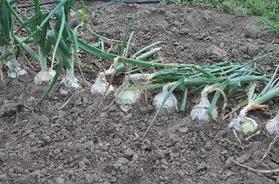
Harvesting Potatoes
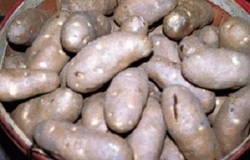
Bumps on Tomato Stems
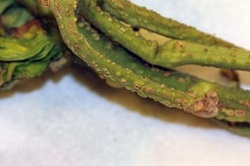
These bumps can eventually give rise to roots (called adventitious roots) if conditions are favorable. This is actually the mechanism the plant uses to form roots when tall, leggy plants are planted in a trench. Some varieties tend to be more prone to this condition than others and stress such as that produced by waterlogged soils also makes a “warty” stem more likely. Growth regulator type herbicides such as 2,4-D can also induce this state. So if you see a warty stem, don’t be concerned. The bumps will not harm the plant in the least. (Ward Upham)
Pests:
Sweet Corn Earworm
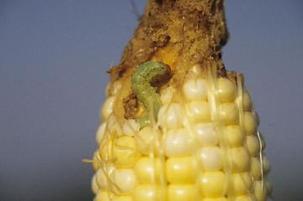
Control is challenging as silks continue to grow over a period of time. This means that even if silks are treated, new silk will appear that hasn't been protected. Applications every 2 to 3 days are needed for insecticides to be effective, especially in late June to early July when peak flight of these moths usually appear.
There is a three-week period from silking to harvest, but there is only a two-week period from when the silks appear to when they begin to dry. Since moths prefer juicy silks and shun those that have started to dry, insecticides are only needed the first two weeks of silking.
Homeowners can use cyfluthrin (Baythroid; Bayer Powerforce Multi-Insect Killer) or spinosad (SpinTor; Captain Jack's Dead Bug Brew; Conserve; Borer, Bagworm, Tent Caterpillar & Leafminer Spray). Spinosad is an organic product. Commercial growers have additional choices including zeta-cypermethrin (Mustang Max), bifenthrin+zeta-cypermethrin (Hero), spinetoram (Radiant) and flubendiamide (Belt).
Though more time consuming, mineral or other light horticultural oils may also be used. The oil is placed inside the silk end of the ear with a medicine dropper (½ to 3/4 of a dropper) after the silks brown. This will coat the earworms already present and likely suffocate them, though some damage to the tip of the ear will likely have occurred. Applying the oil before the silk has browned may interfere with pollination, leading to incompletely filled ears. (Ward Upham)
Grub Control
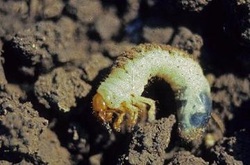
Another grub preventer with the trade name GrubEx contains chlorantraniliprole. Though this product is very effective, it is less water soluble than imidacloprid. It should be applied earlier, preferably April or May, but applications through June should still be effective. Remember, all grub products should be watered in soon after application. (Ward Upham)
Miscellaneous:
Checking for a Healthy Root System in a Potted Plant
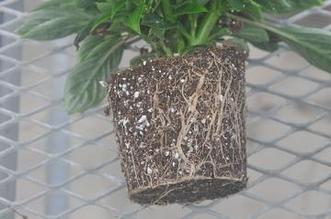
Place your hand over the top of the pot with the stem of the plant passing between two of your fingers. Turn the pot upside down and tap the edge of the pot against the edge of a table, counter or other hard surface. The plant should release and come out.
A healthy root system will typically have white roots or at least roots with white tips. The roots should be visible along the outside of the rootball and should reach the bottom of the pot. Unhealthy roots will be blackened and may have a slimy appearance and foul smell. Also, an unhealthy root system often does not reach the bottom of the pot. By far the most common cause of an unhealthy root system is overwatering.
Water by touch, not by calendar. If the soil is dry an inch deep, it is time to water. An alternative method is to water by weight, if practical. Lift the pot after a good, deep watering to determine the weight of the well-watered plant. Then use the “dry an inch deep” method to determine when it is time to water. Check the weight of the plant at that time. This will give you an idea of the difference between a well-watered plant and one that is ready for more water. The time between waterings will vary tremendously between summer with its long days and active plant growth and winter with cooler days, shorter days and little to no growth.
Be sure to add enough so that some water flows out the bottom of the pot. This will help wash out excess salts that tend to accumulate within the potting soil.
Contributors: Ward Upham, Extension Associate
 RSS Feed
RSS Feed
